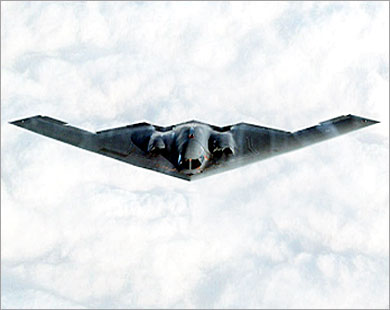The National Interest magazine lists 5 reasons why it is so difficult to outsmart the US military.
Ironically, the credit goes to a Russian physicist.
In an article published by him
in its latest issue, military expert Kyle Mizukami considered that the stealth properties that the army has introduced into the manufacture of its weapons are not limited to combat aircraft, but also include submarines.
Although Russian physicists were the first to put forward the idea of using stealth features in weapons, it was the Americans who implemented it in practice, according to the article.
Mizukami - a writer specializing in defense and national security affairs in California - says that stealth or the idea of limiting the enemy's ability to detect a weapon is not new, as the first cave man who sewed a pocket in his clothes to hide a stone inside.
Thousands of years later, thanks to the ability to detect objects on land, in the air and at sea using electromagnetic radiation, it has become increasingly difficult to hide weapons from view in broad daylight.
A Russian physicist named Peter Ovimtsev had published papers on the refraction of electromagnetic waves (radar waves).
Without realizing the seriousness of her work, the authorities of the Soviet Union at the time translated many of these papers into English.
From these researches, the flight engineers of the American company Lockheed deduced a correct theory about the reduction of the radar cross-section, and it was the F-117 Nighthawk stealth fighter plane that was born.
Since then, stealth technology has become an integral part of any tactical aircraft deployed by the United States.
Here are 5 of the most lethal combat stealth weapons:
1- SR-71 Blackbird
This plane was known to be the fastest, but it was not known to be a stealth plane.
This type of aircraft is considered the first of its kind to be distinguished in its design with many stealth features.
On its first flight in 1962, the plane contained 4 stealth features.
The first feature is that the flight deck is designed to avoid radar waves from being reflected.
The second advantage is that the wings, tail and structure of the aircraft were used in the manufacture of composite materials alternating with titanium metal, given that the composites are radar-absorbing materials and use stealth technology and are used to hide the vehicle or any object from radar detection.
The third is the massive G-58 after-combustion engines with large air intakes placed close to the fuselage.
The fourth advantage of the S-71 fighter lies in the black paint and the circles filled with small iron balls.
The distinctive black coating helps reduce the radar's cross-section.
2- F-117 Nighthawk
This was the first type of operational stealth aircraft, often mistakenly referred to as a stealth fighter.
Contrary to popular belief, the F-117 is a tactical bomber that lacks the ability to hit targets in the air.
The first combat flight of this type of aircraft was in 1989 when it bombed targets during the US invasion of Panama.
Its second flight was during Operation Desert Storm, when it carried out night missions over Baghdad and participated in the imposition of no-fly zones over Iraq in the 1990s.
It also participated in missions over Kosovo in 1999 and during the invasion of Iraq in 2003, before being retired in 2008.
3- B-2 Spirit bomber
Northrop Grumman unveiled this model in 1988, and this aircraft is considered the first stealth strategic bomber.
The design objective of the aircraft, which lacks the tail, is to further reduce the radar signature.
It was originally designed to penetrate the Soviet air defense network in any nuclear war.
The B-2 Spirit is capable of carrying weapons ranging from B-61 thermonuclear gravity bombs (B-61) and magazine-penetration (MOP) bombs, to JDAMs. Mounts on unguided bombs or "dumb bombs" and converts them into "smart" all-weather guided munitions.
The B-2 Spirit bomber took part in combat missions in Kosovo in 1999, in Operation Iraqi Freedom in 2011, and in bombing an airport during the no-fly zone over Libya, or "Odyssey Dawn" as the United States called it.
4- F-22 Raptor
Unlike previous US stealth aircraft, including the F-117 and B-2, the F-22 was designed as a stealth fighter to give it a decisive advantage in air-to-air combat.
The F-22 saw the light of day in the late 1980s as an advanced tactical fighter.
5- Ohio-class ballistic missile submarines
Stealth technology is not limited to aircraft only. Submarines have been distinguished by their stealth features over the past decades.
Of all the submarines, submarines equipped with Ohio-class ballistic missiles are the most powerful for their combination of lethality and stealth.
These submarines displace 18,450 submerged tons and are considered the largest of their kind built by the United States.
Eighteen Ohio-class submarines have been built, 14 of which carry ballistic missiles, while the other four have been rearmed with conventional cruise missiles.

